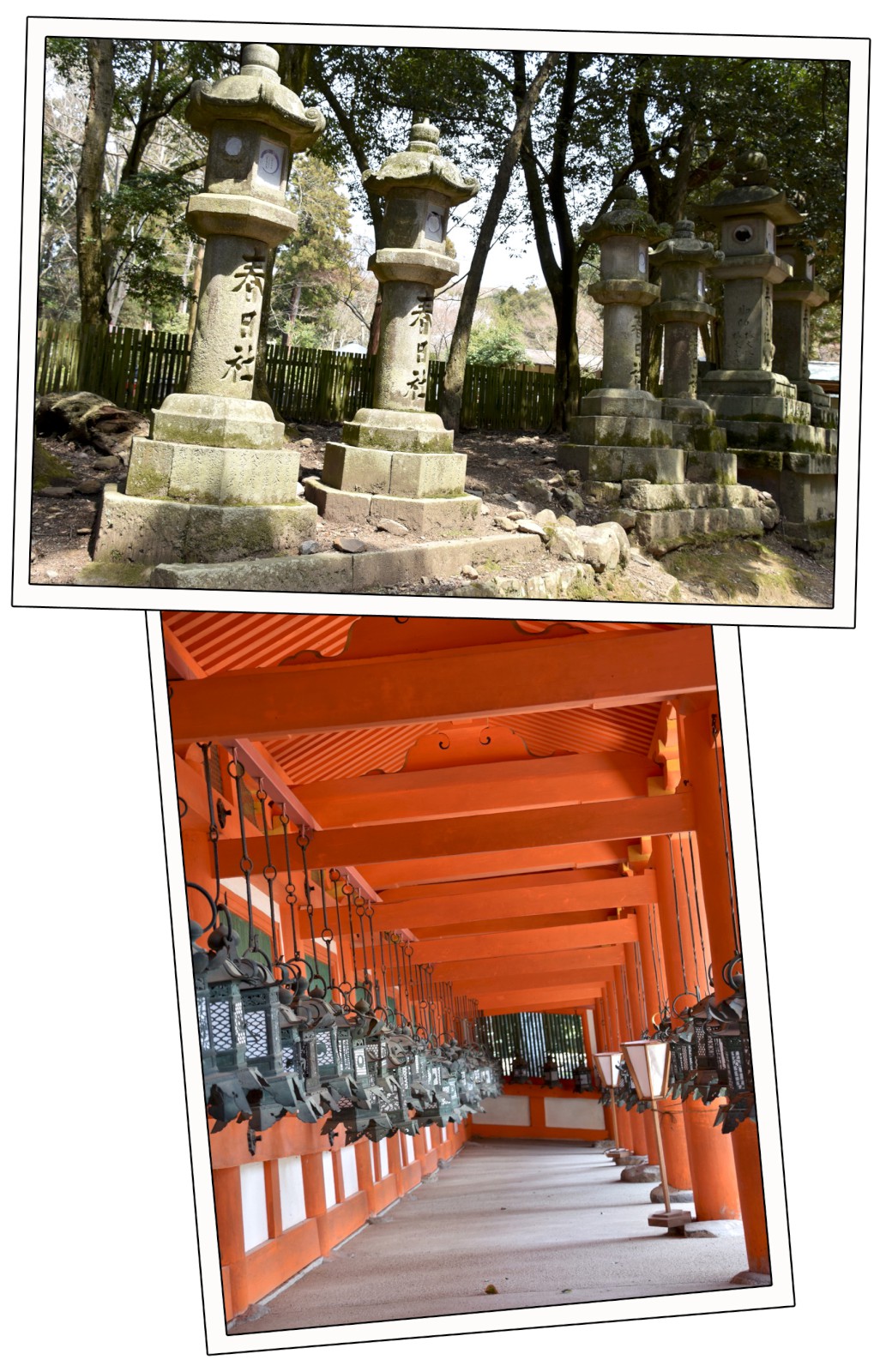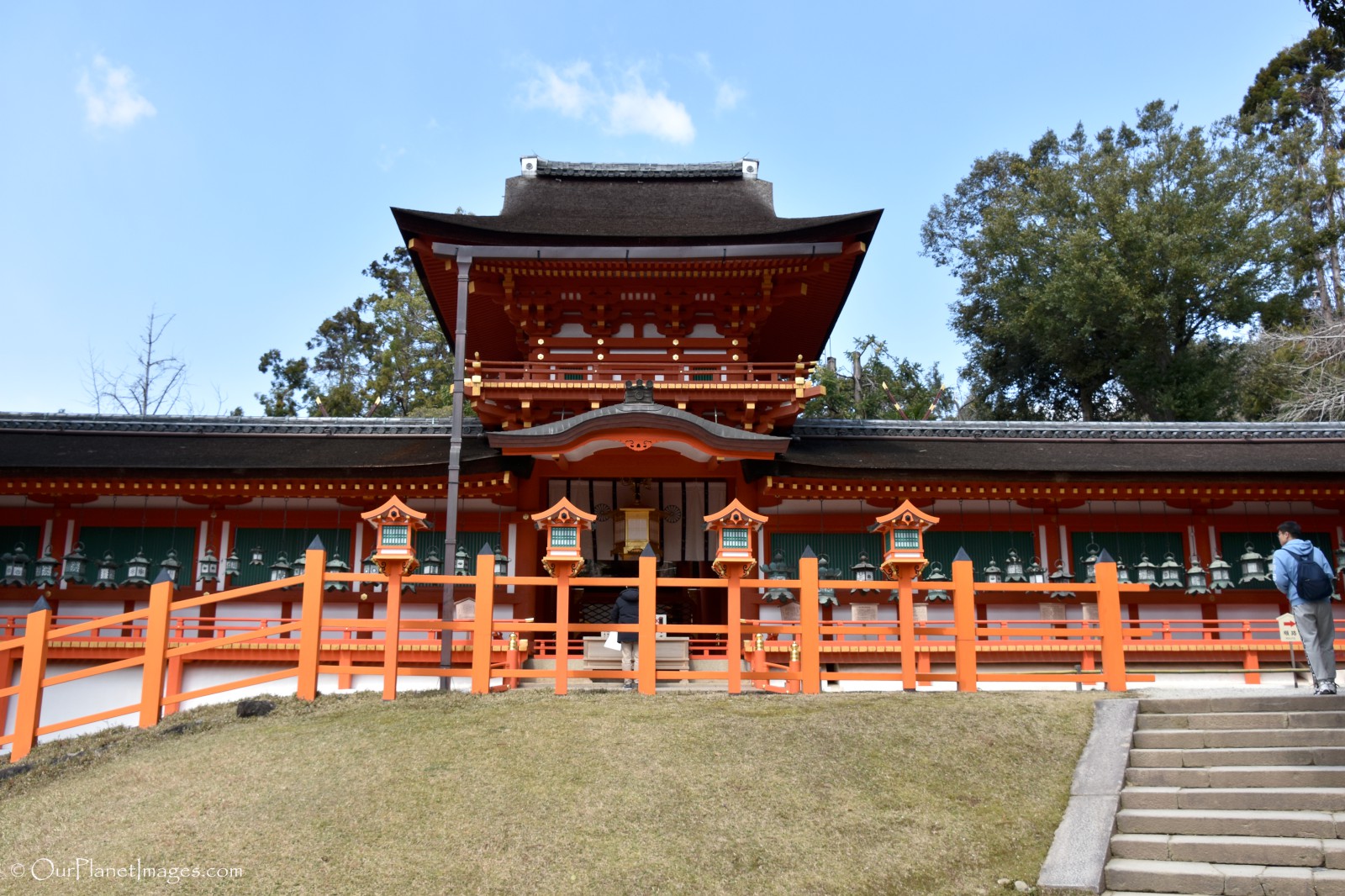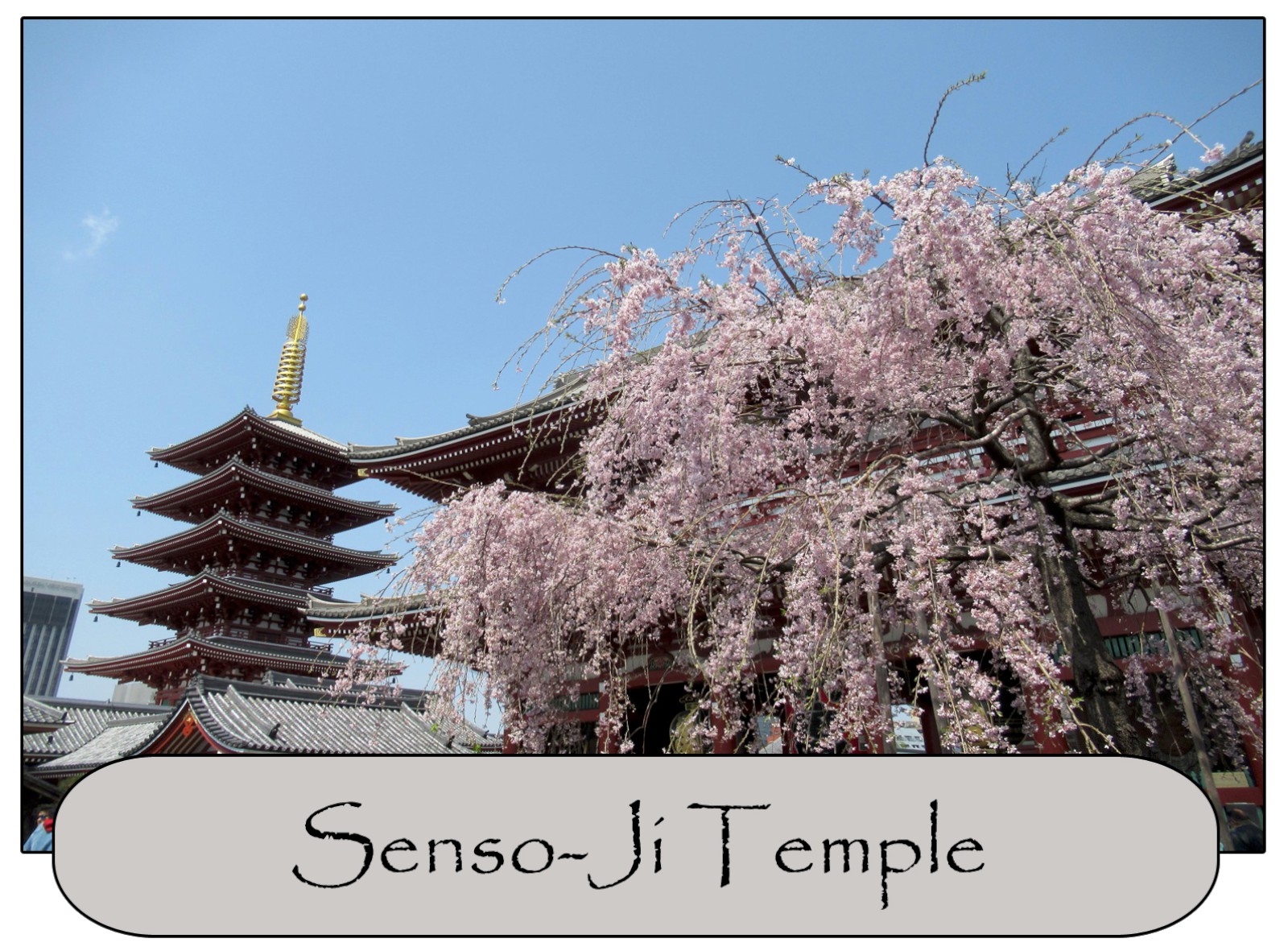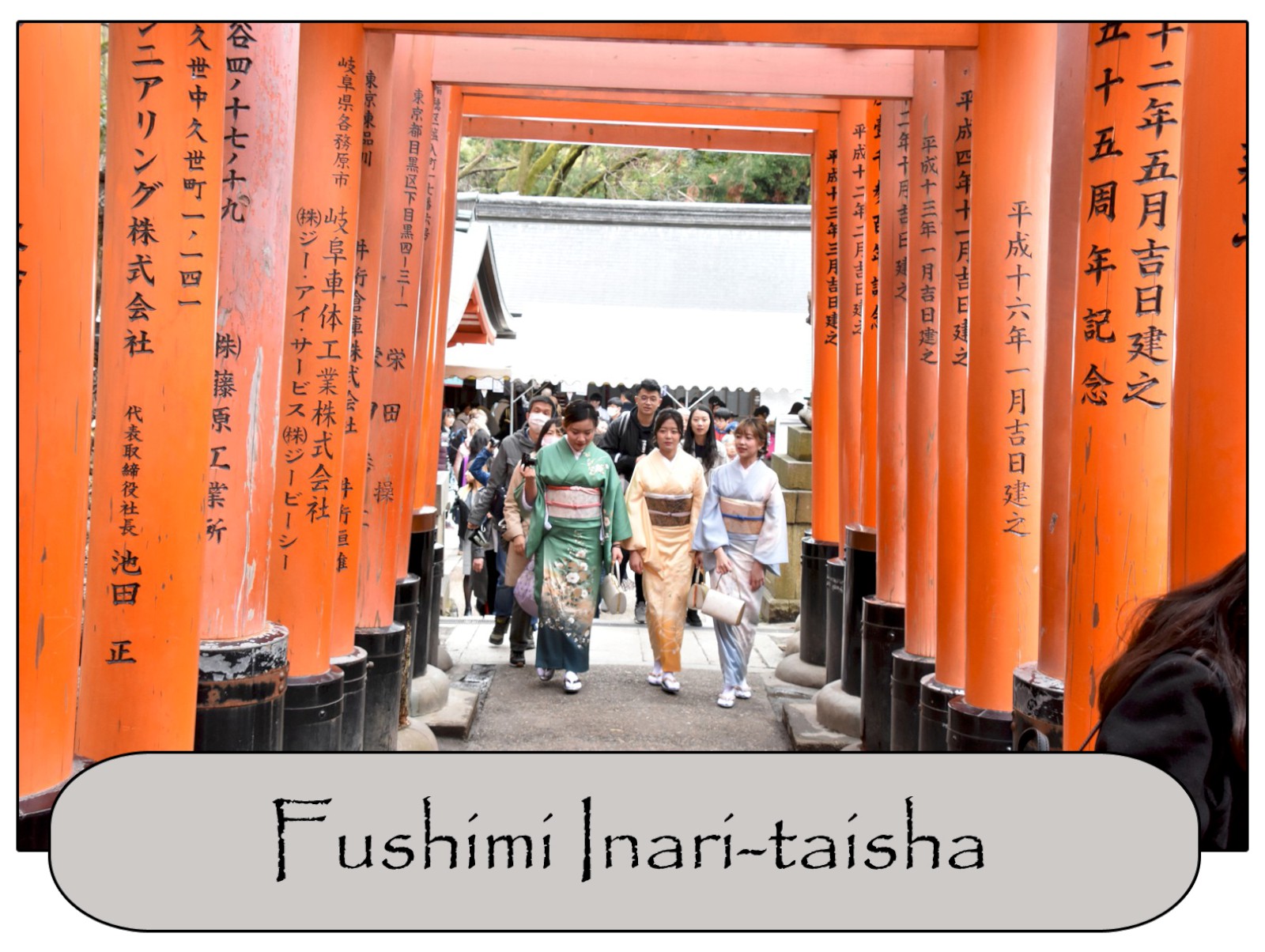Kasuga Taisha Shrine was built in 768 AD and is located in Nara Park in the city of Nara, Japan. The shrine was built by the Fujiwara clan, one of the most influential families to the imperial dynasty. The Kasuga Taish Shrine is famous for its many lanterns that are placed around the shrine grounds and buildings. Each of the lanterns have been donated by worshippers.

The approach to the main sanctuary is a graveled walkway lined with 2000 stone lanterns.
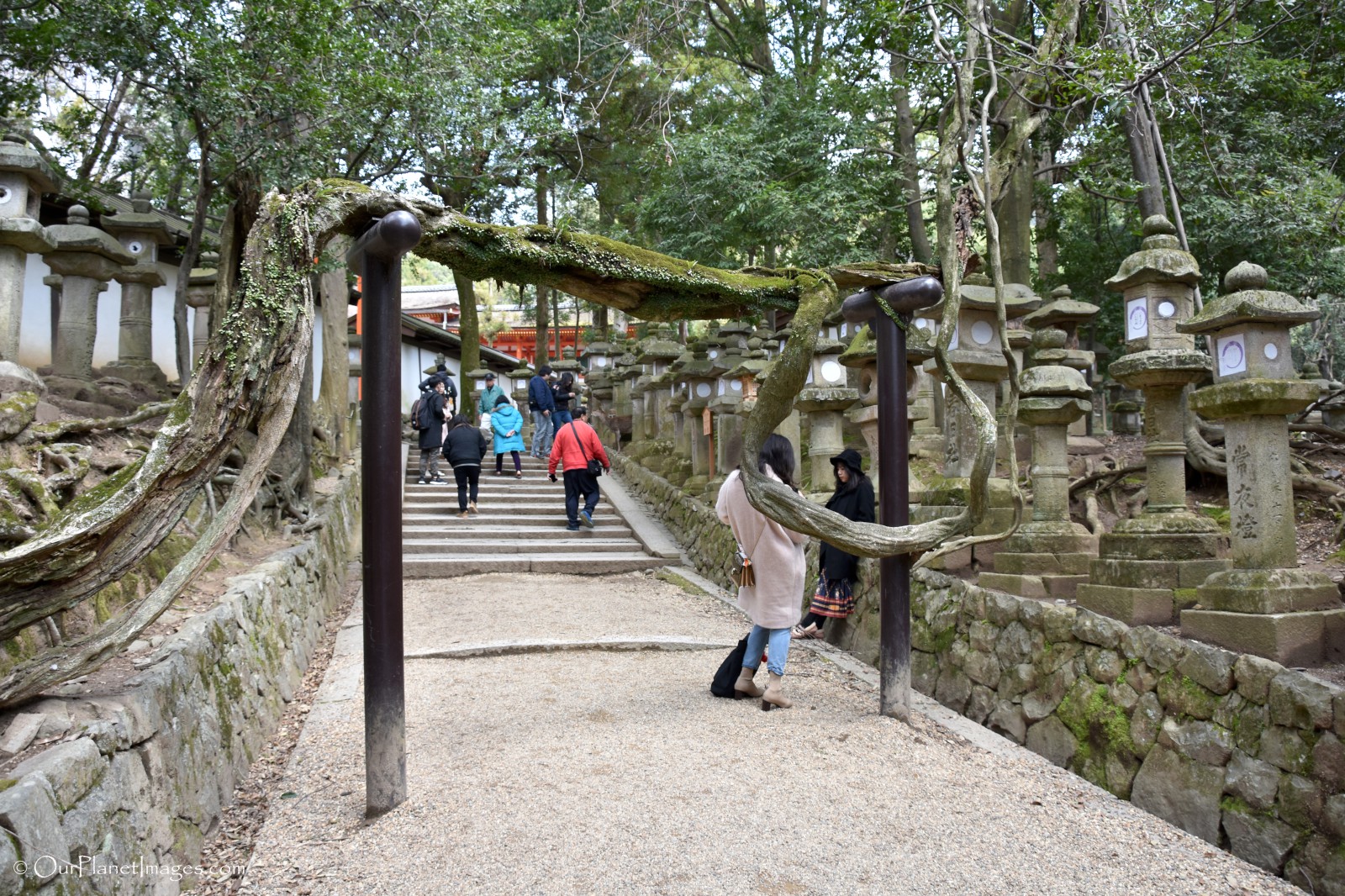
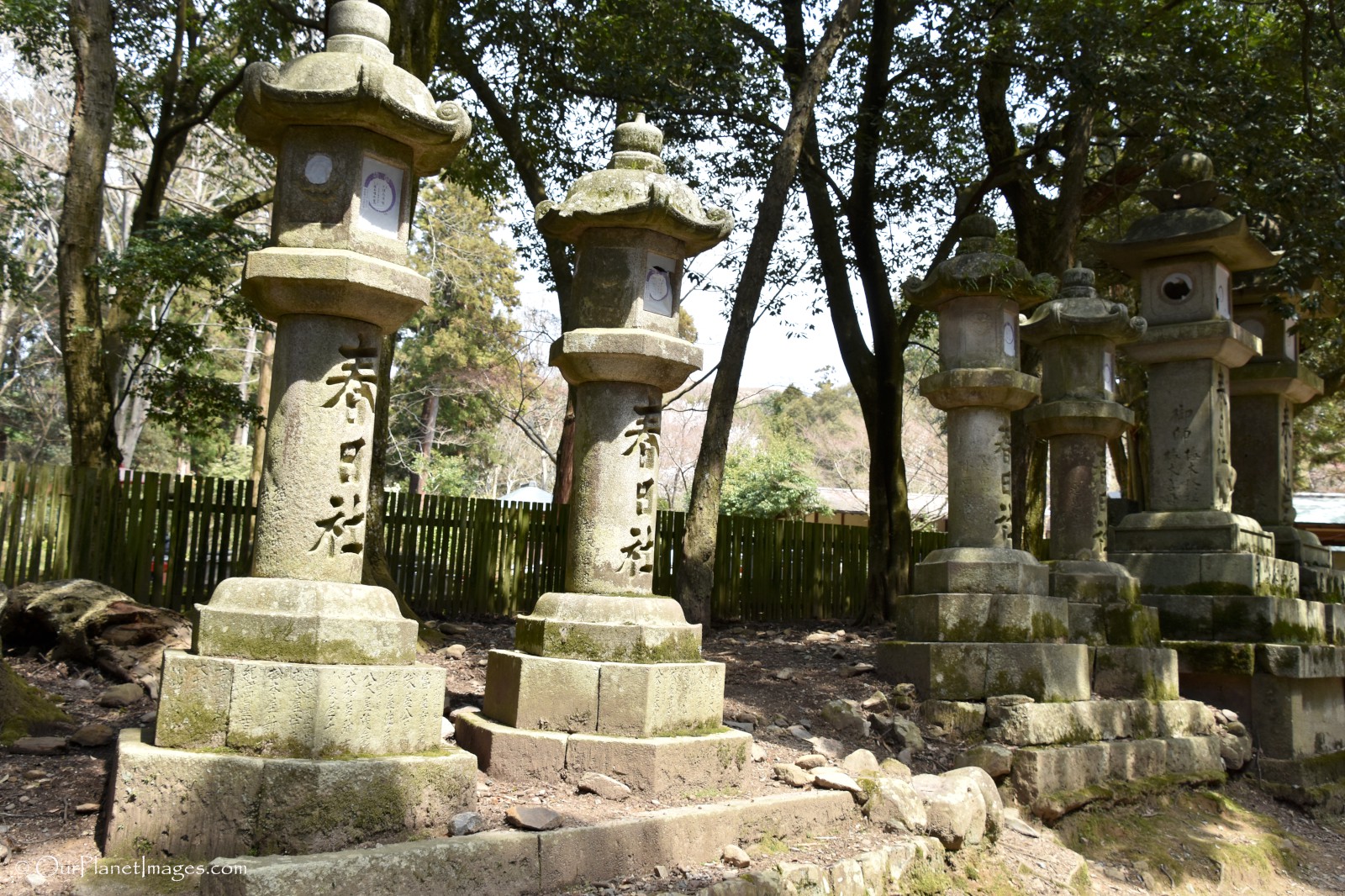
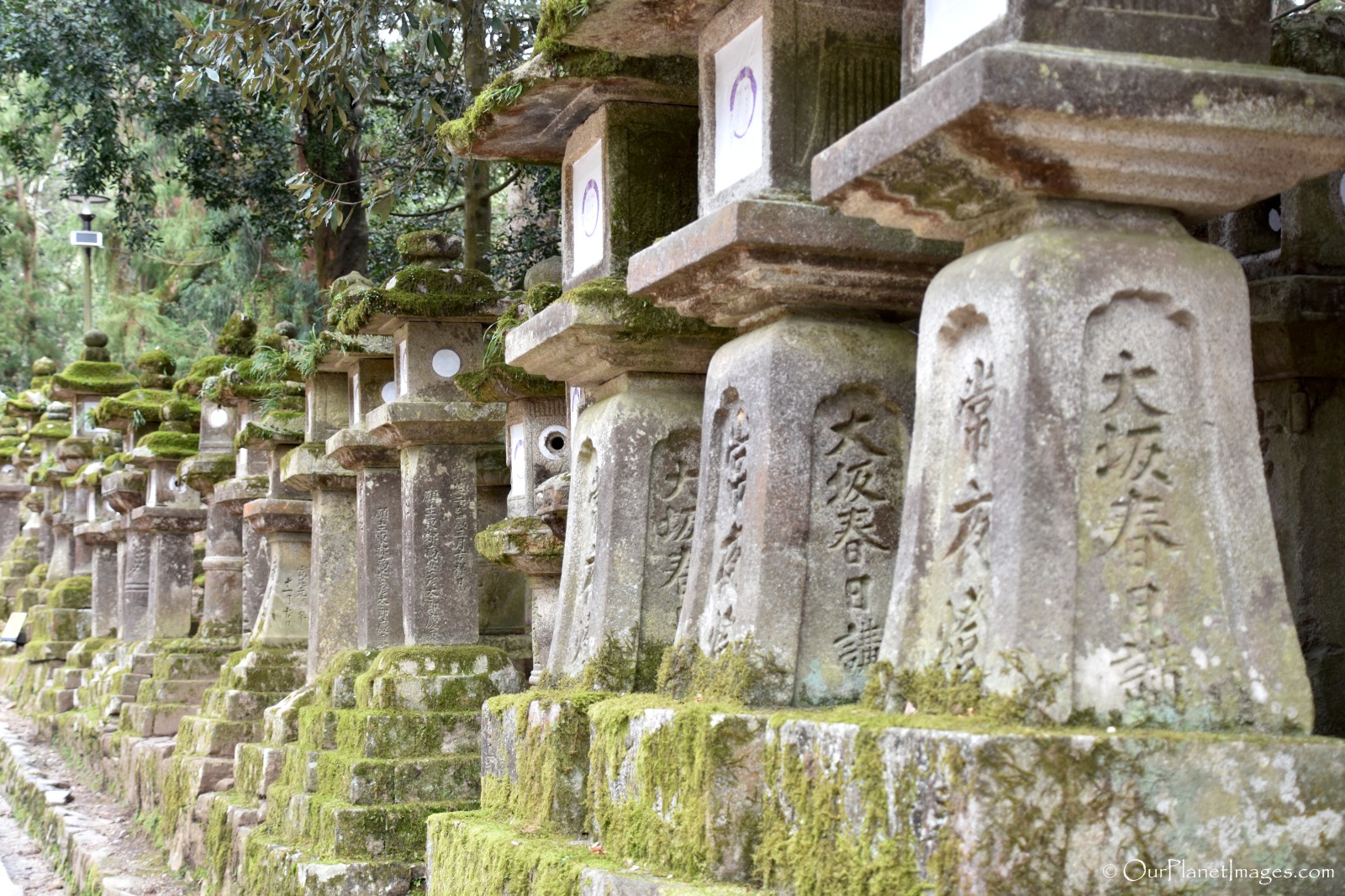
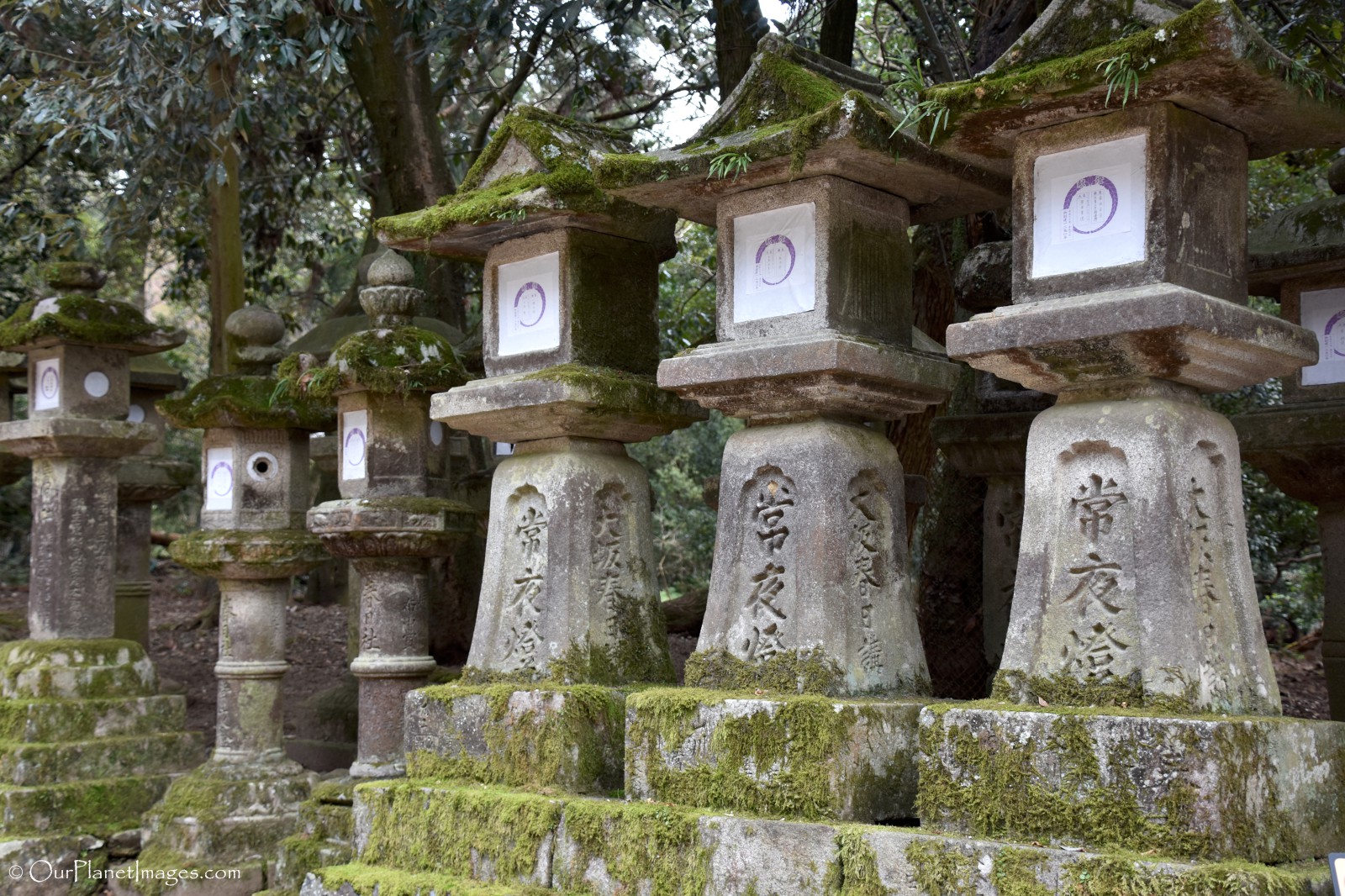
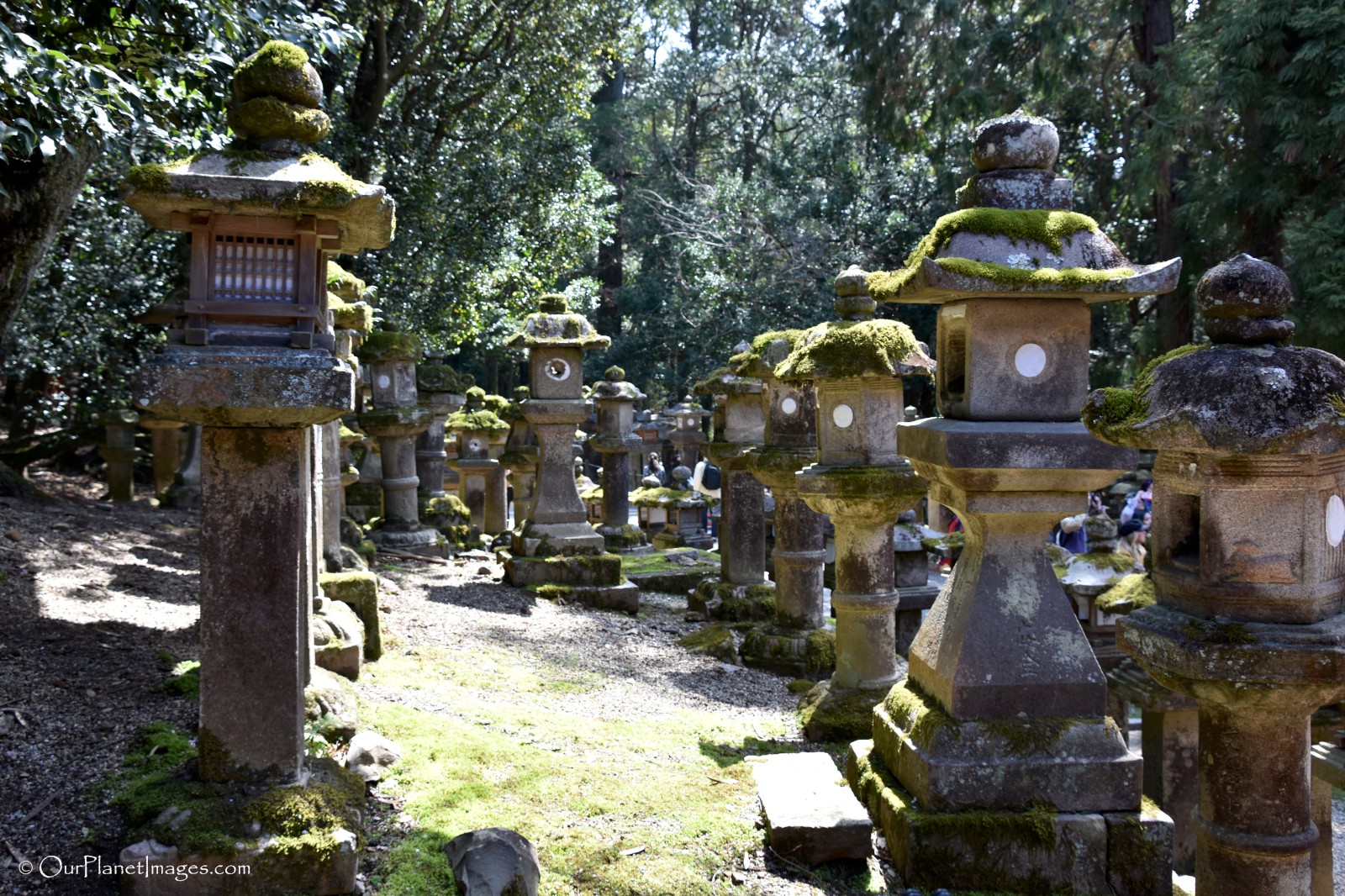
The main sanctuary is adorned with a thousand beautifully crafted bronze lanterns hanging by hooks from the building’s eaves.
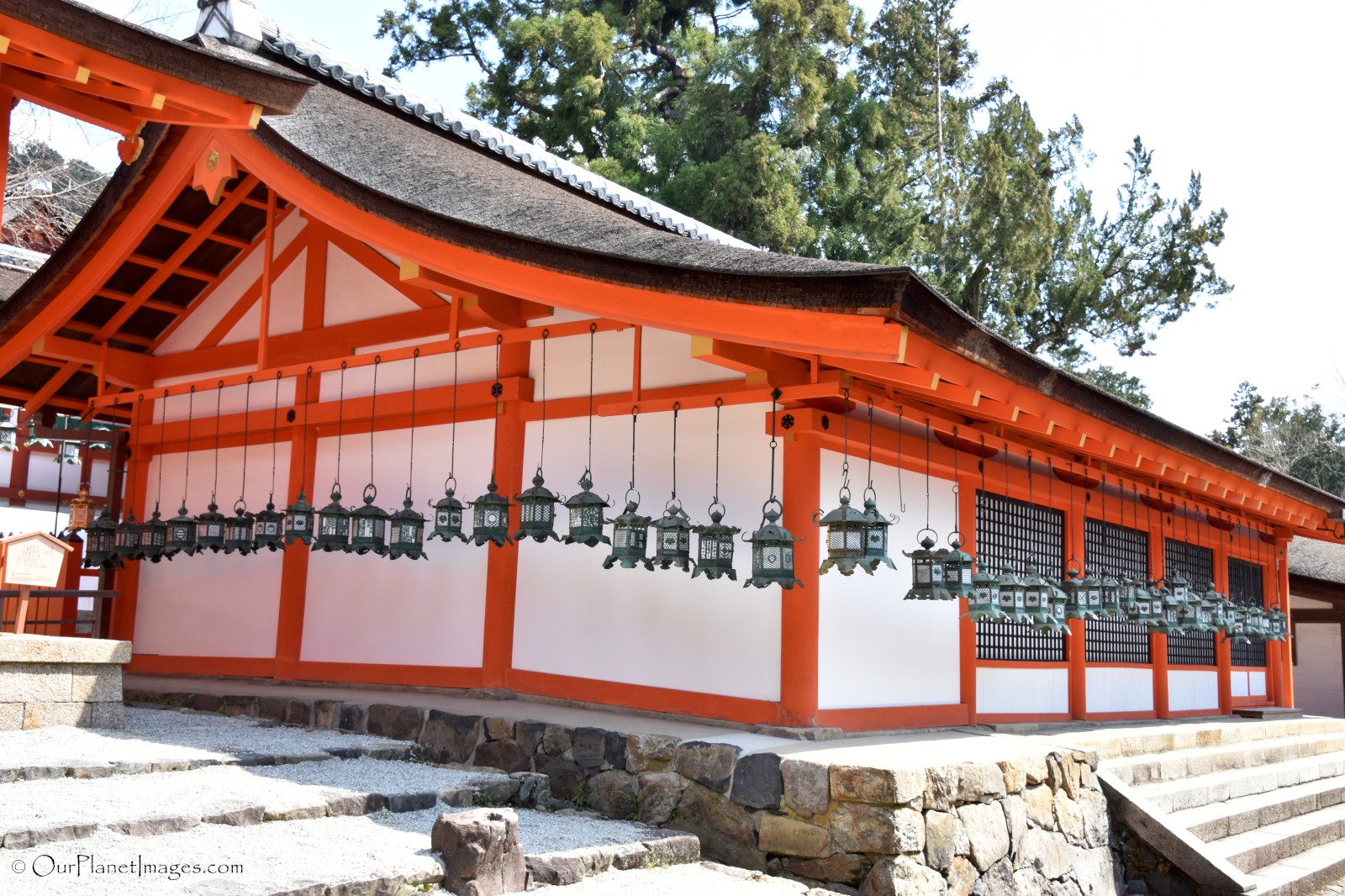
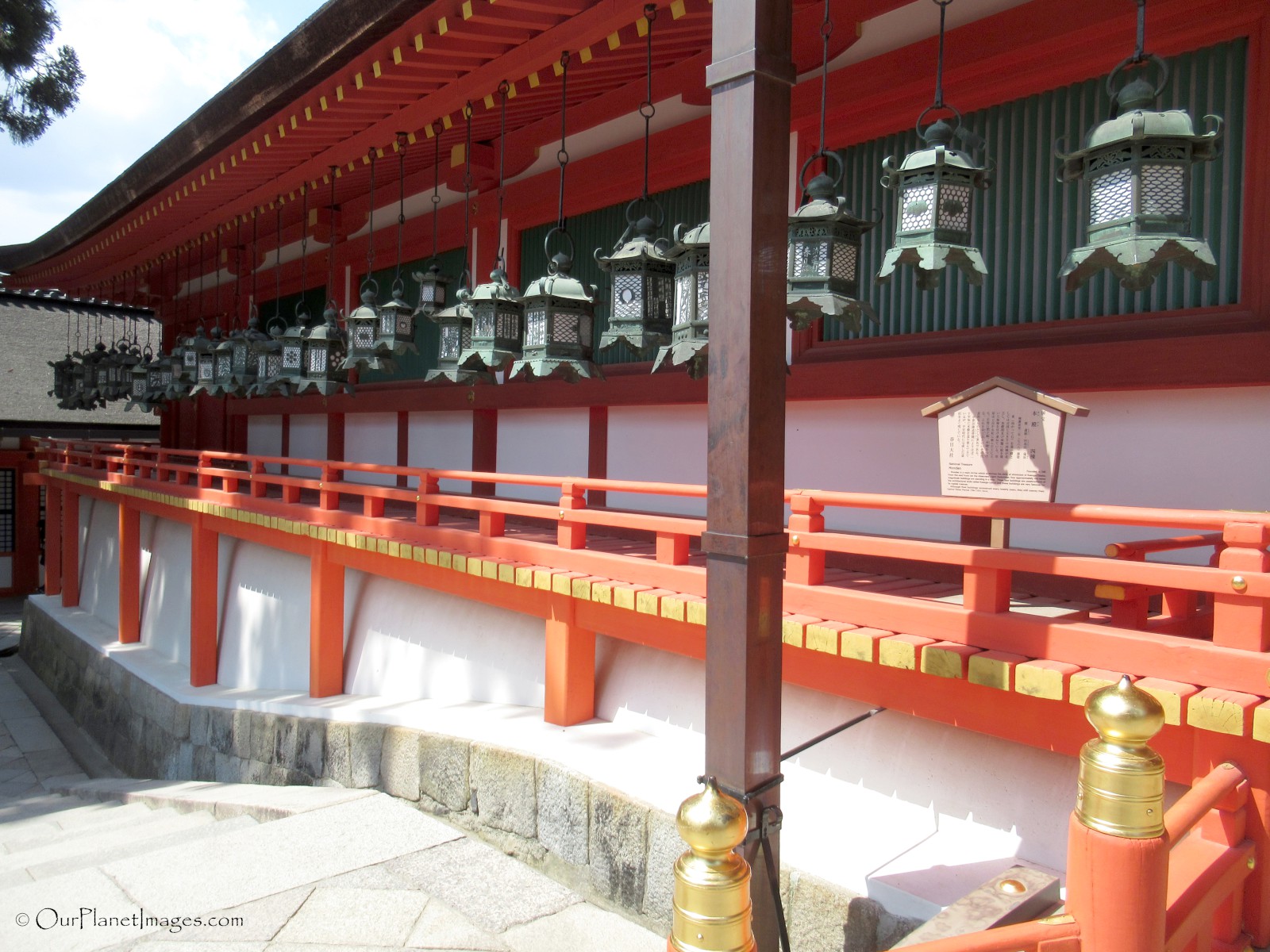
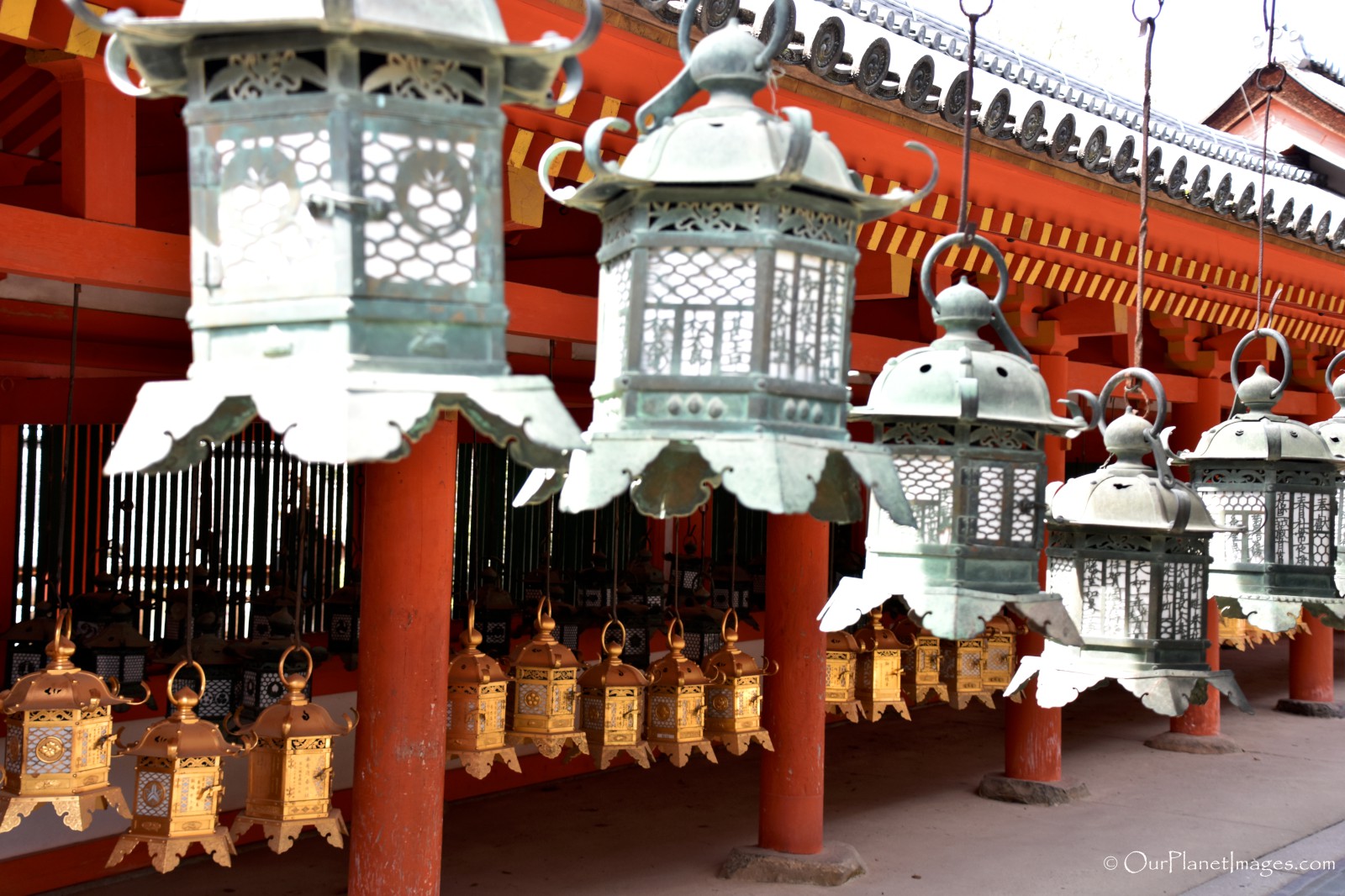
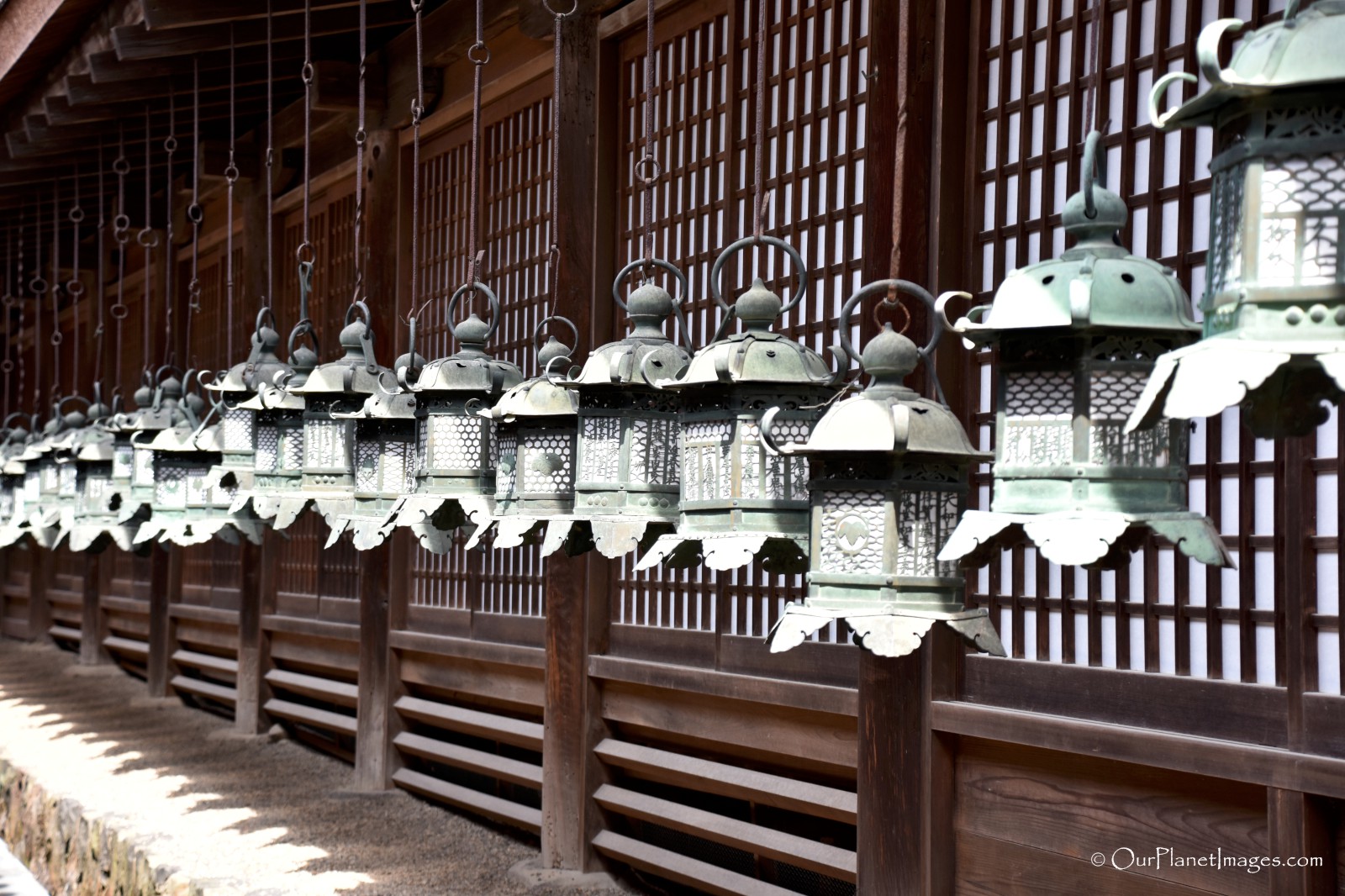
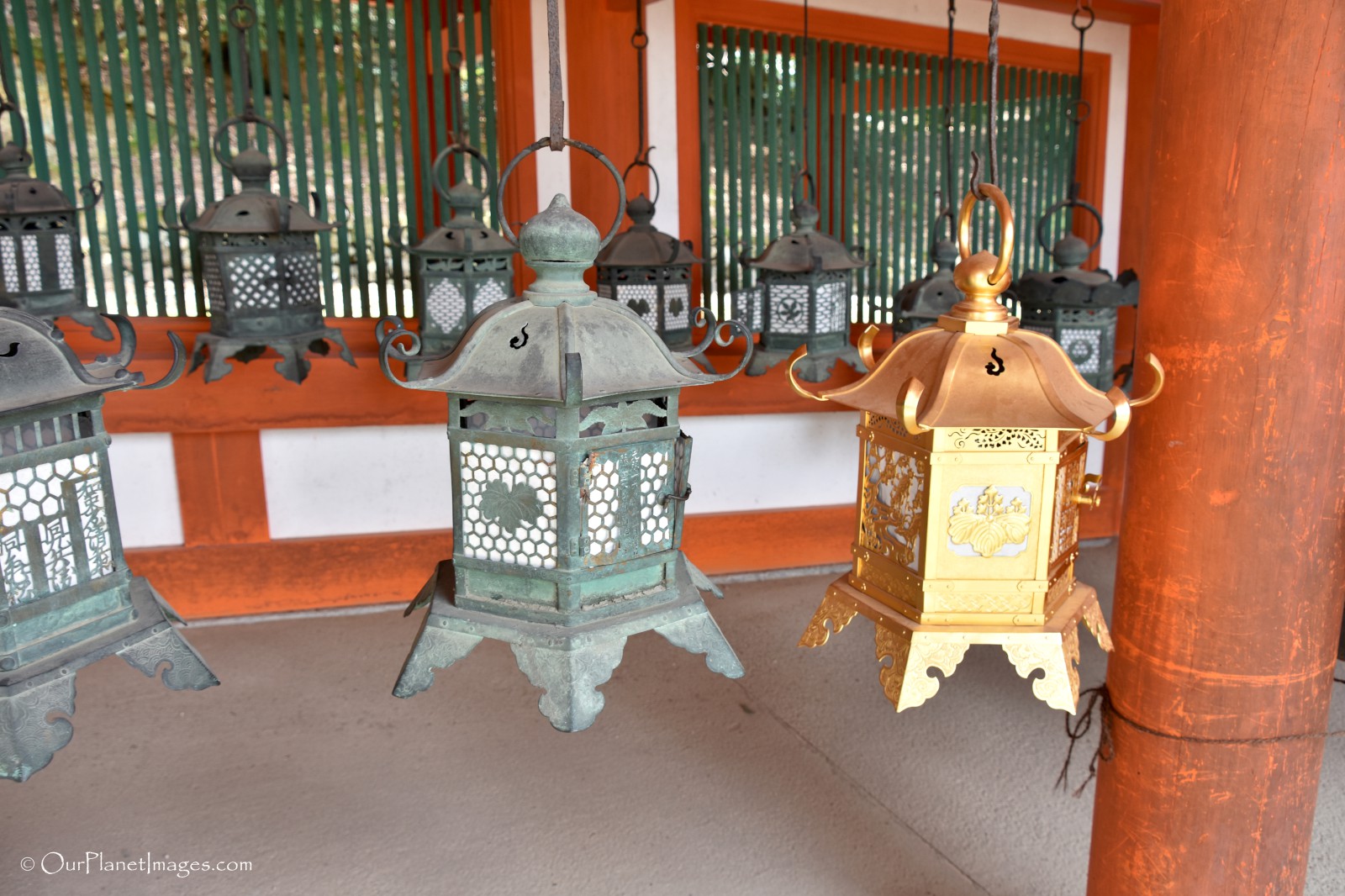
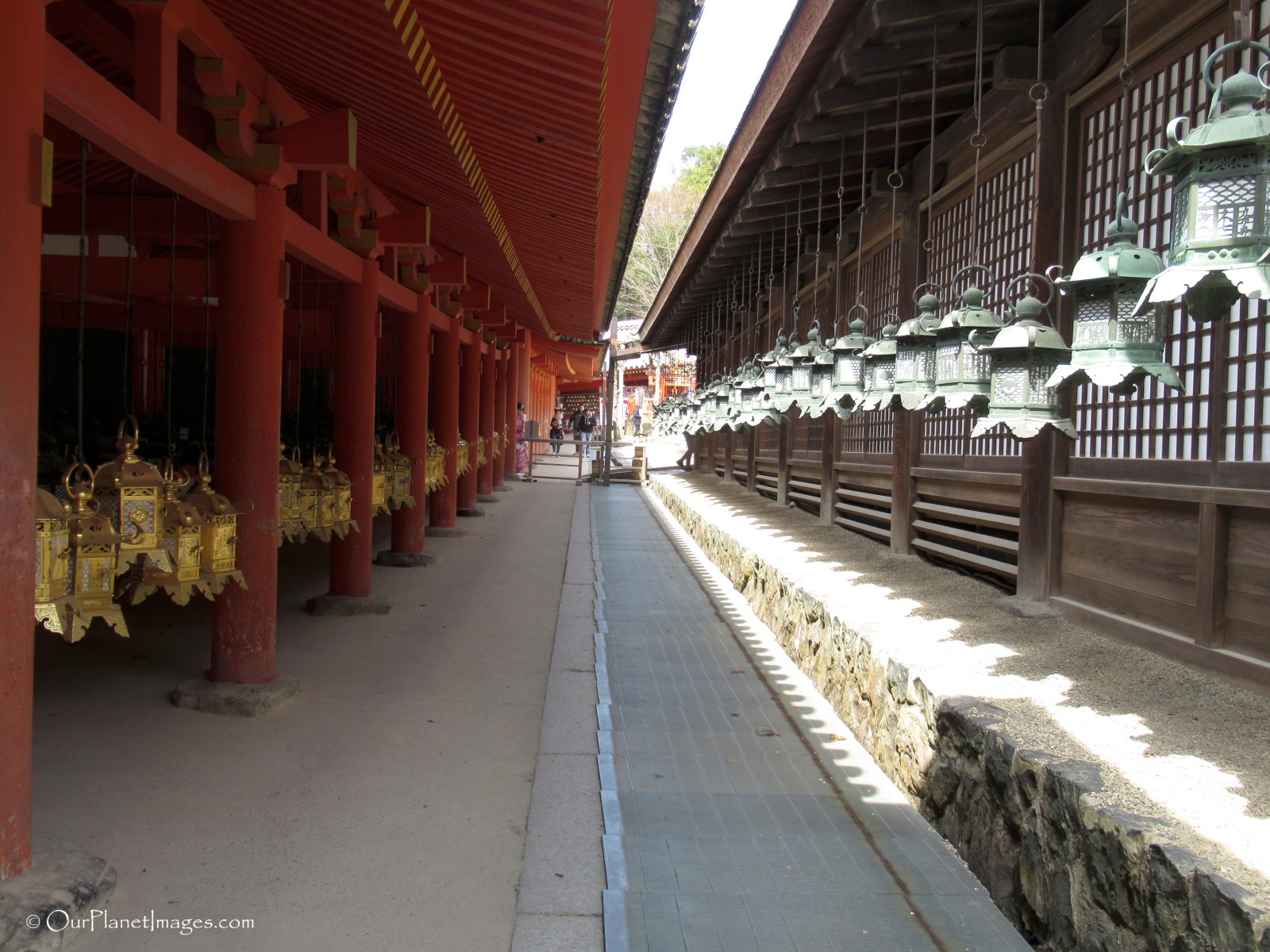
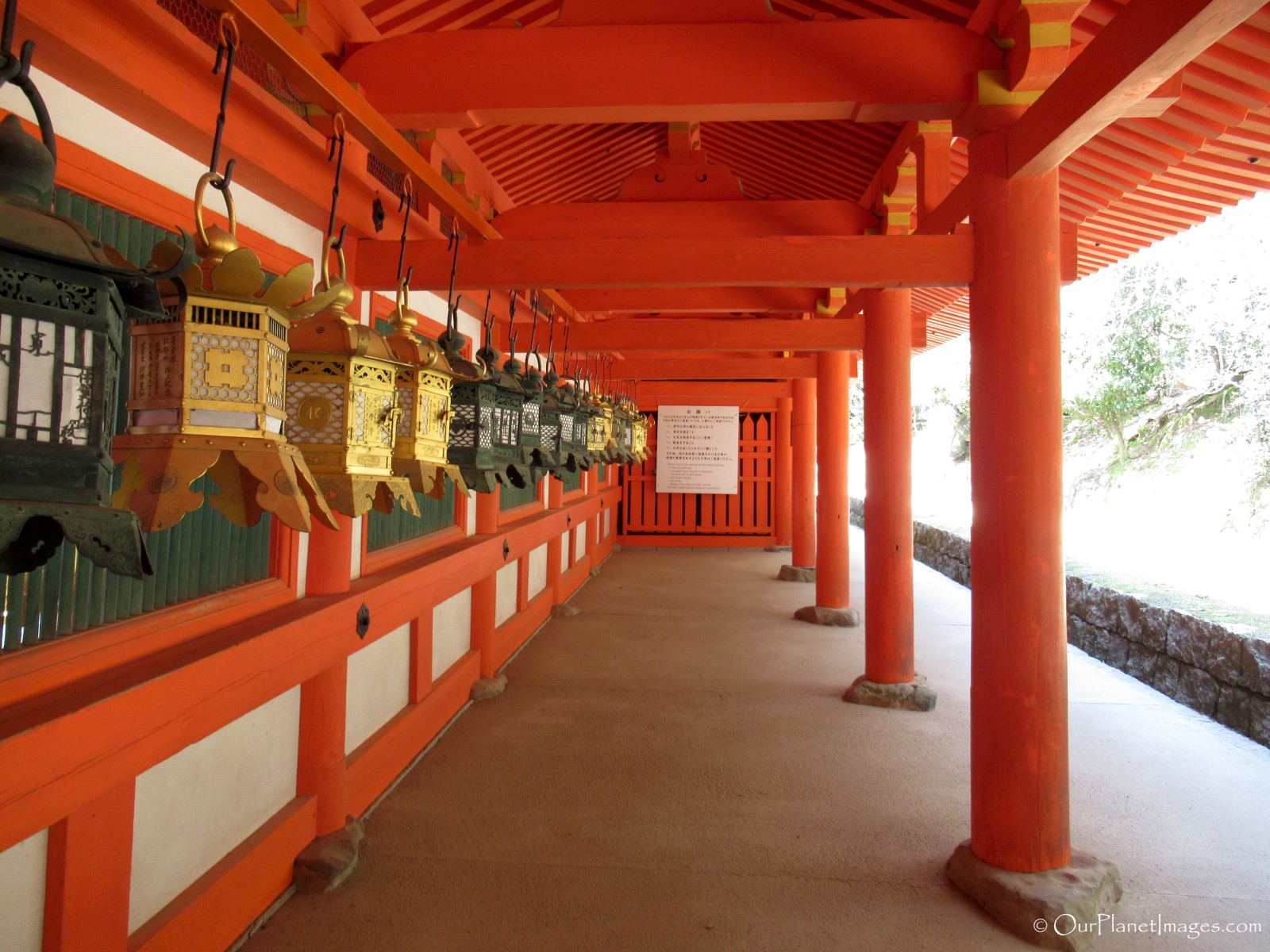
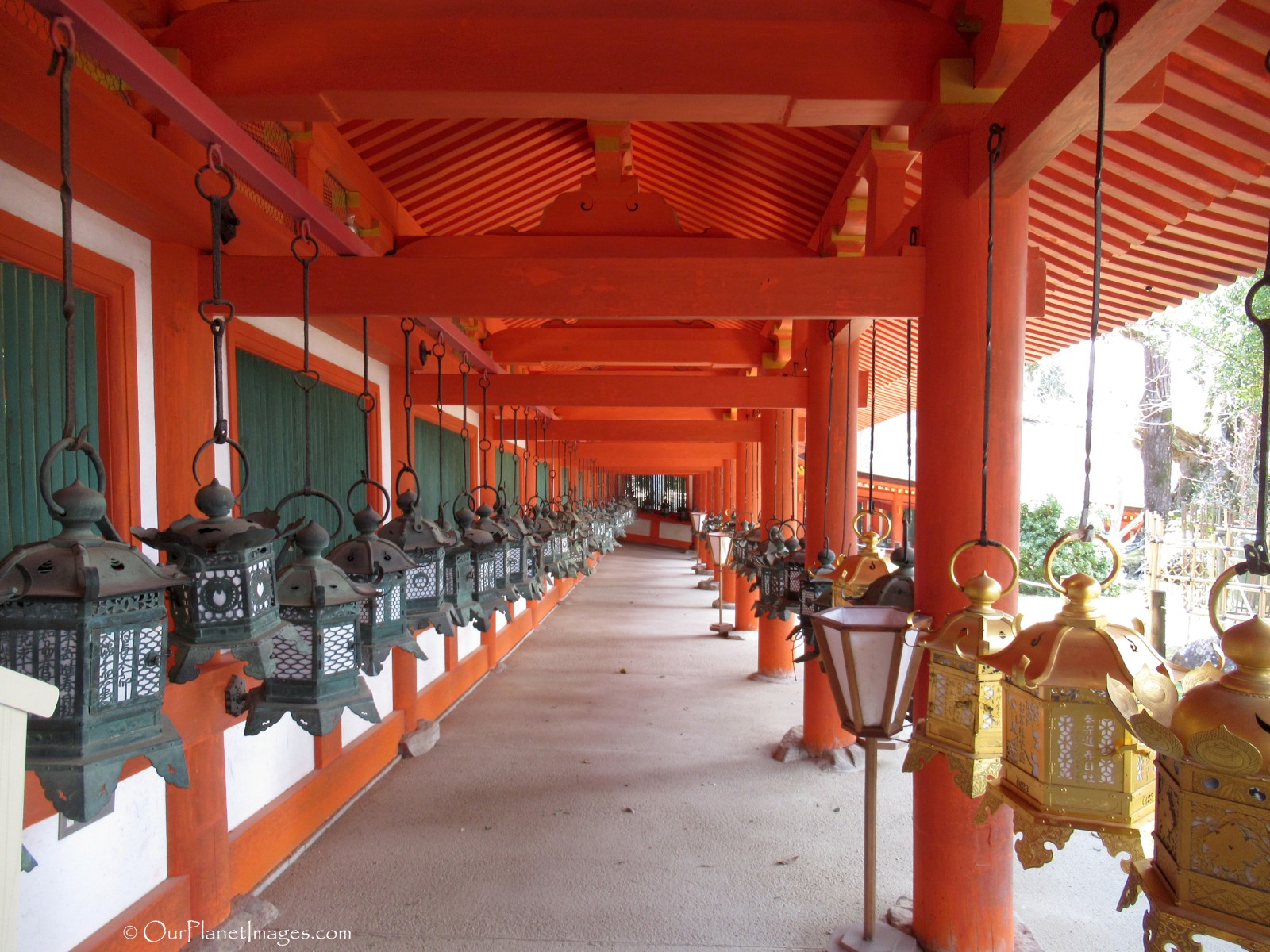
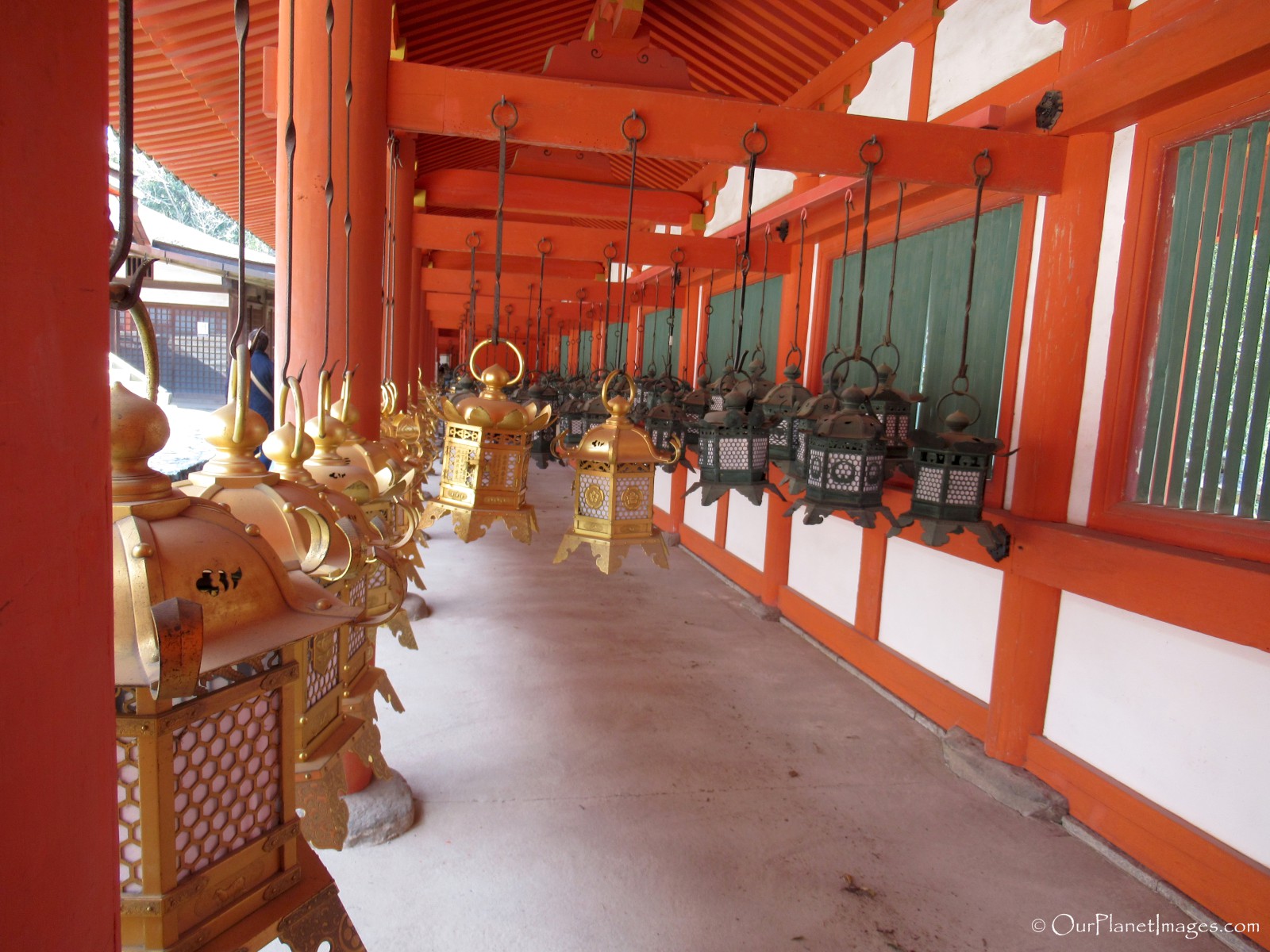
All of the stone and bronze lanterns are lit twice a year for the Mantoro festival on February 3rd and during Obon, the festival of souls in mid-August.
Since most visitors aren’t able to attend one of the lantern festivals, the shrine maintains a dark room filled with illuminated lantern so visitors can experience a piece of the lantern ceremony at any time of day, every day of the year.

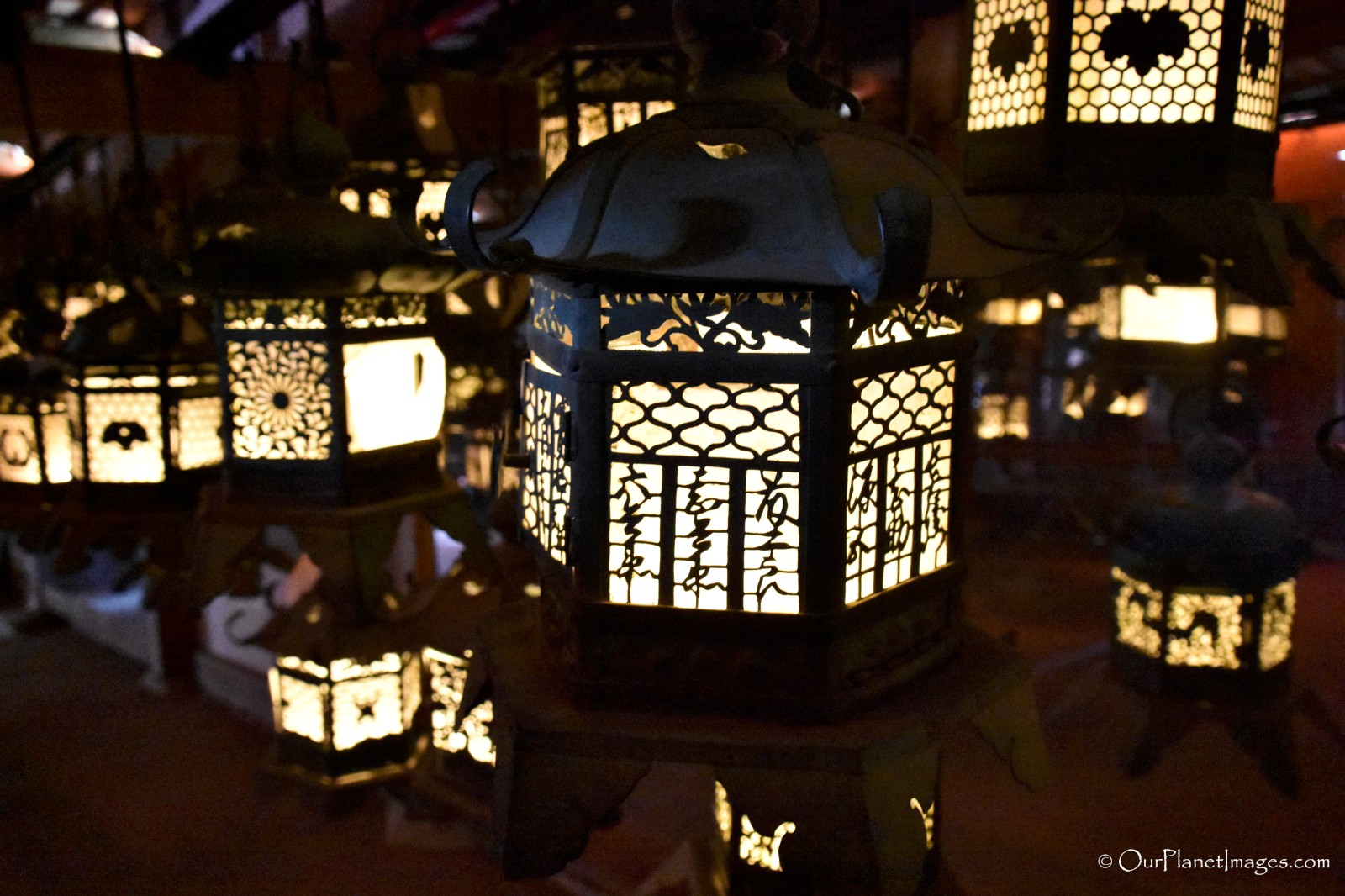
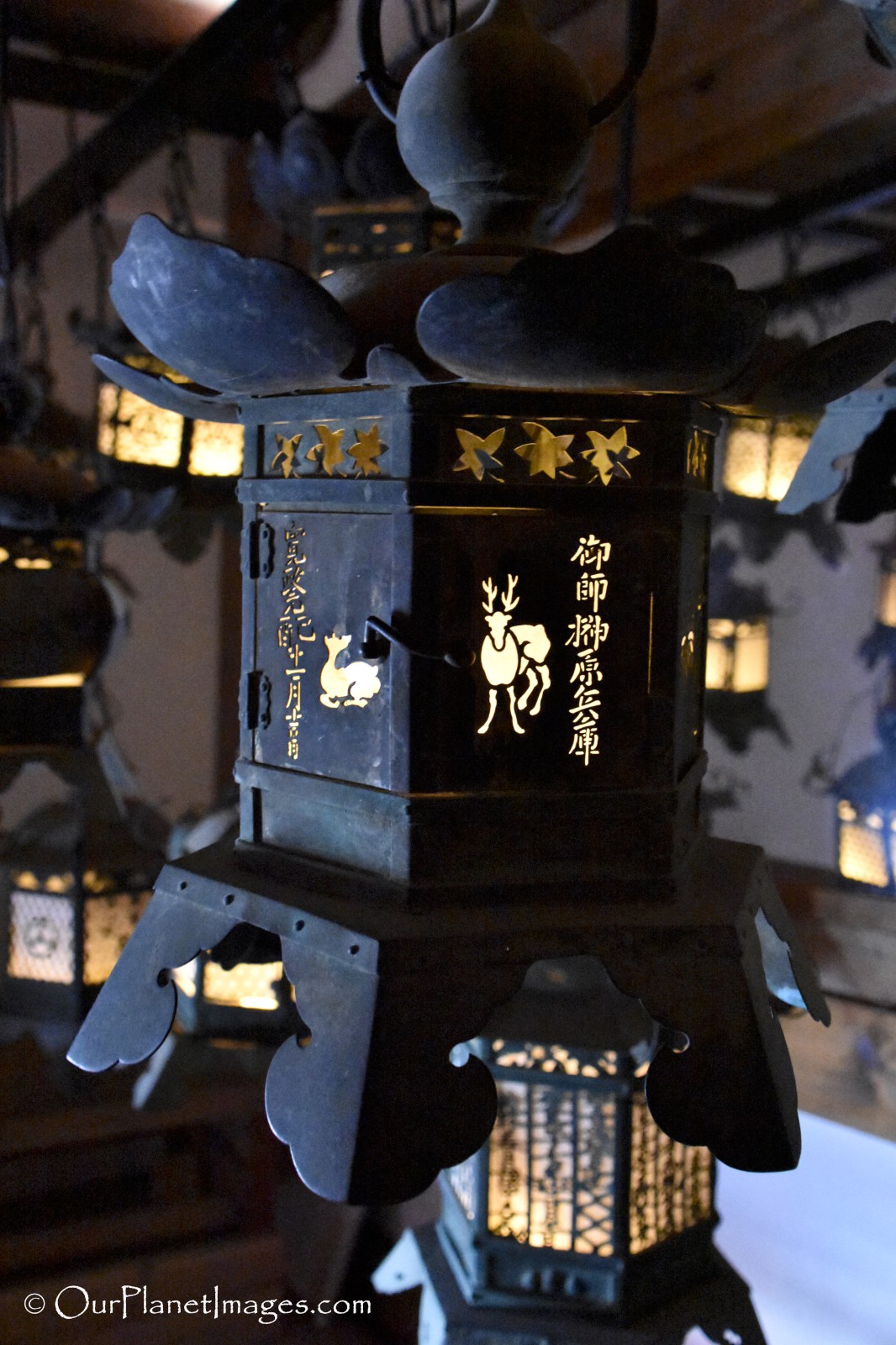
Small shrines
Around the complex are several small shrines. The crisscross roof frame at the front and back of the roof is something that I had not seen before and thought it was fascinating. Some of these shrines were decorated on the inside with bamboo mats, colored tassels and gold symbols.

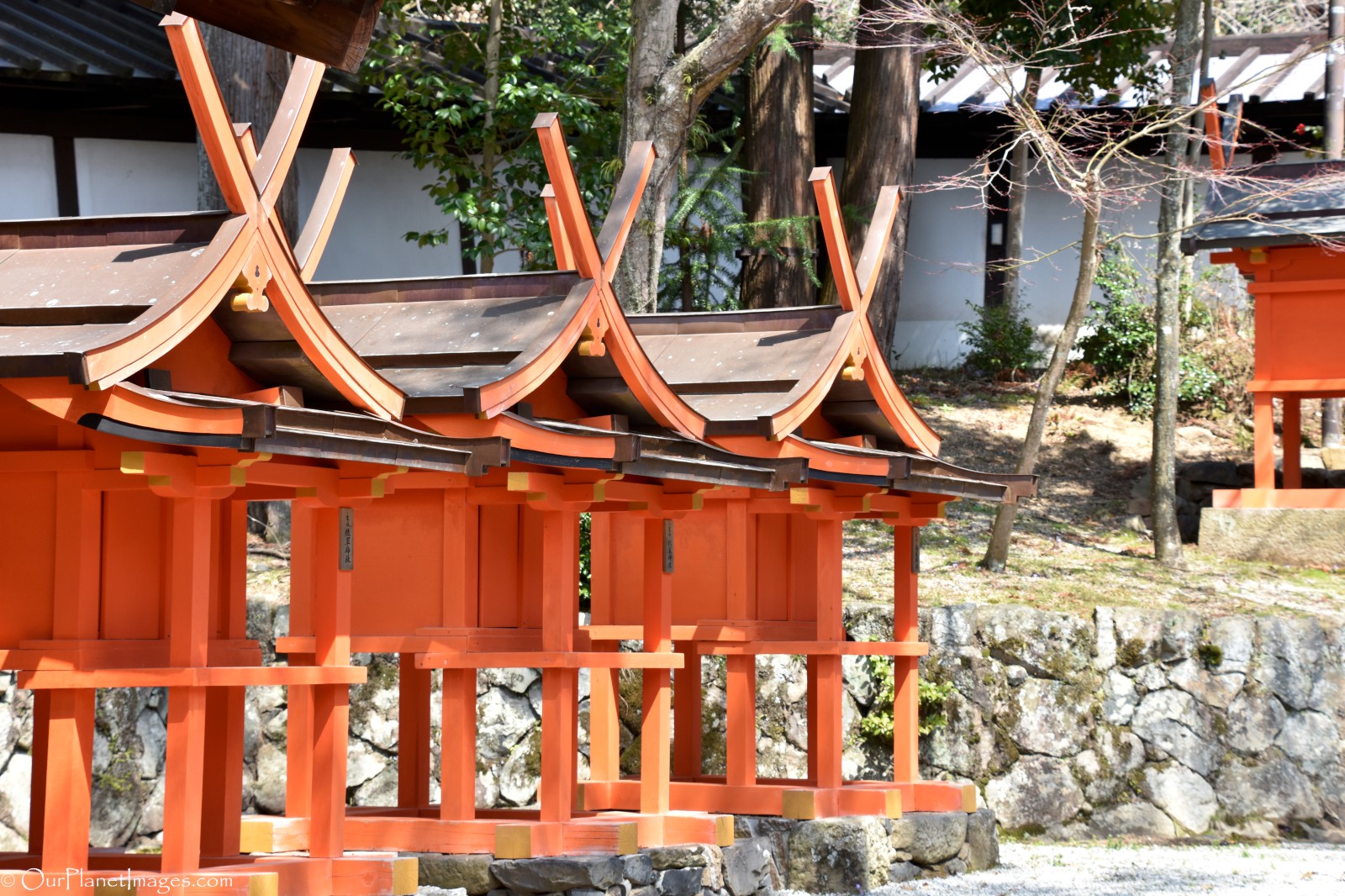
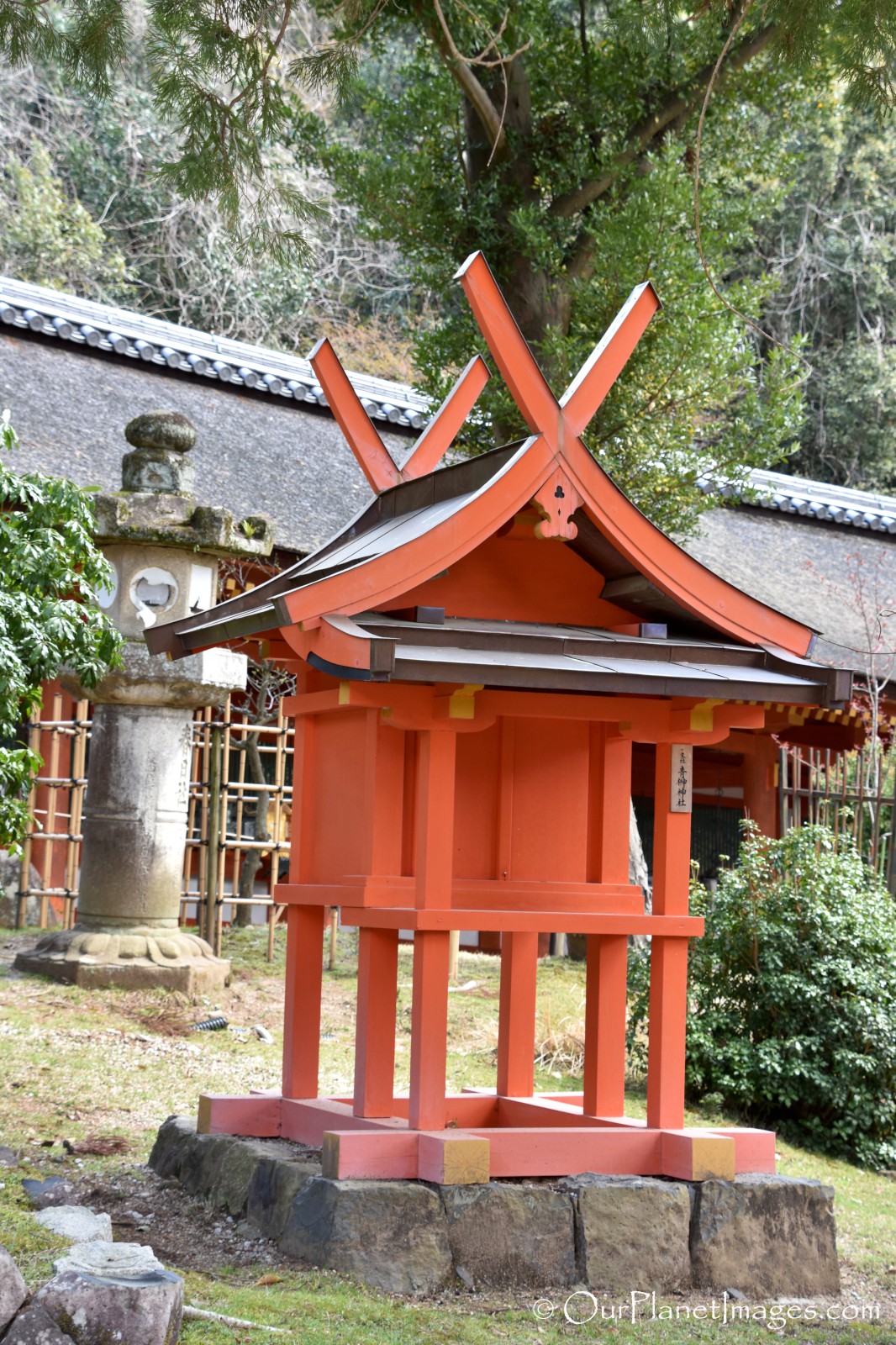
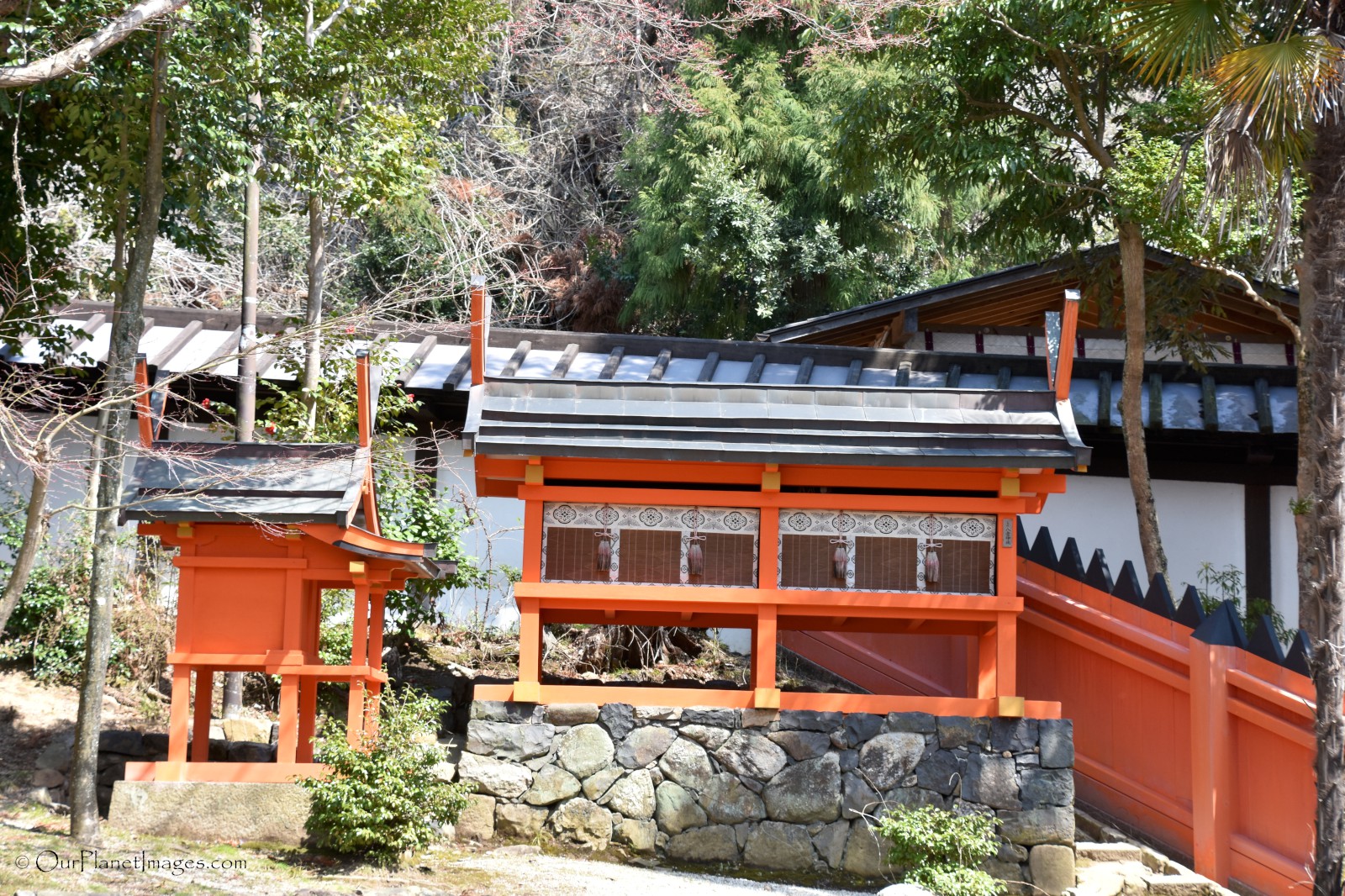
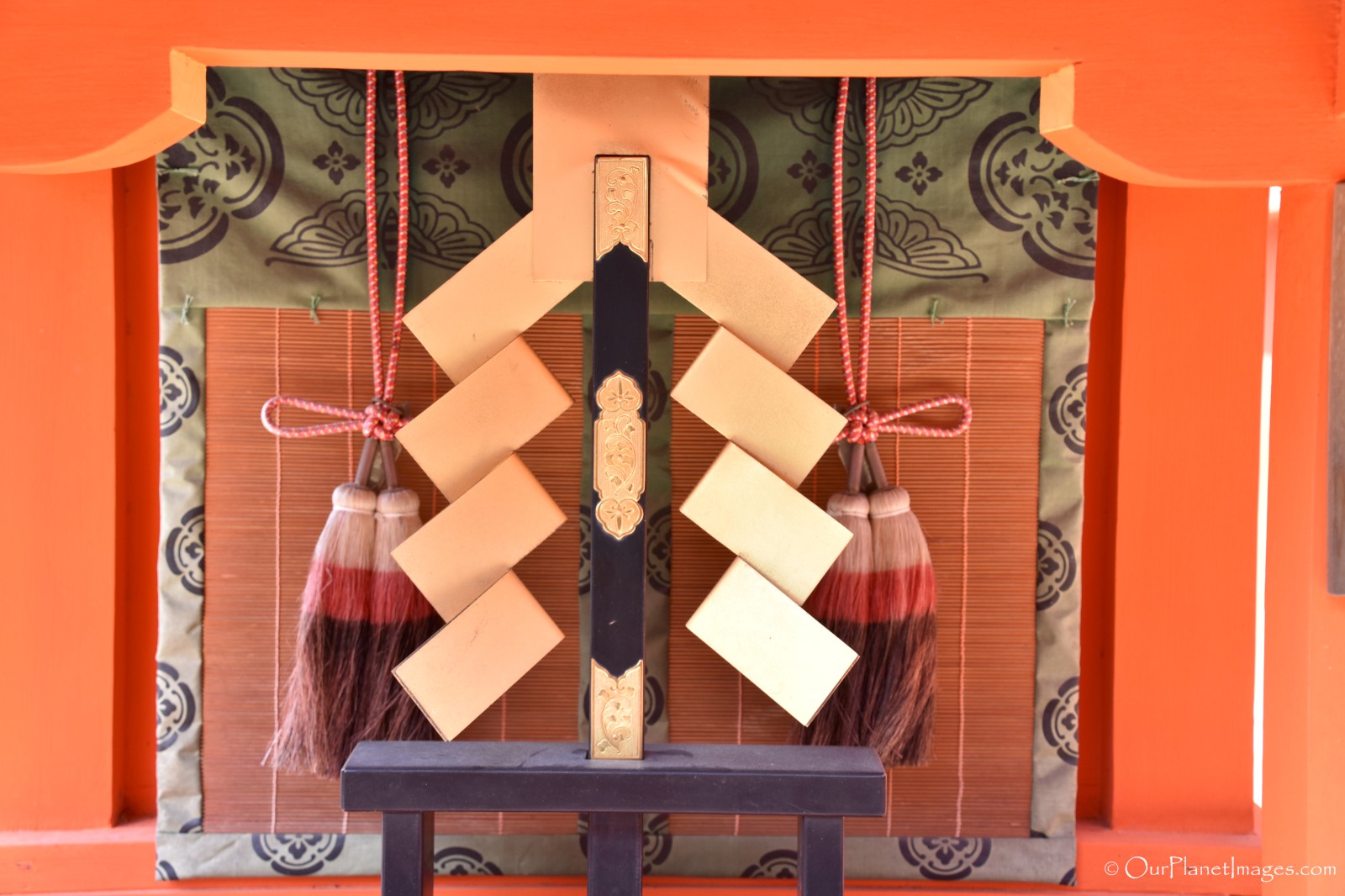
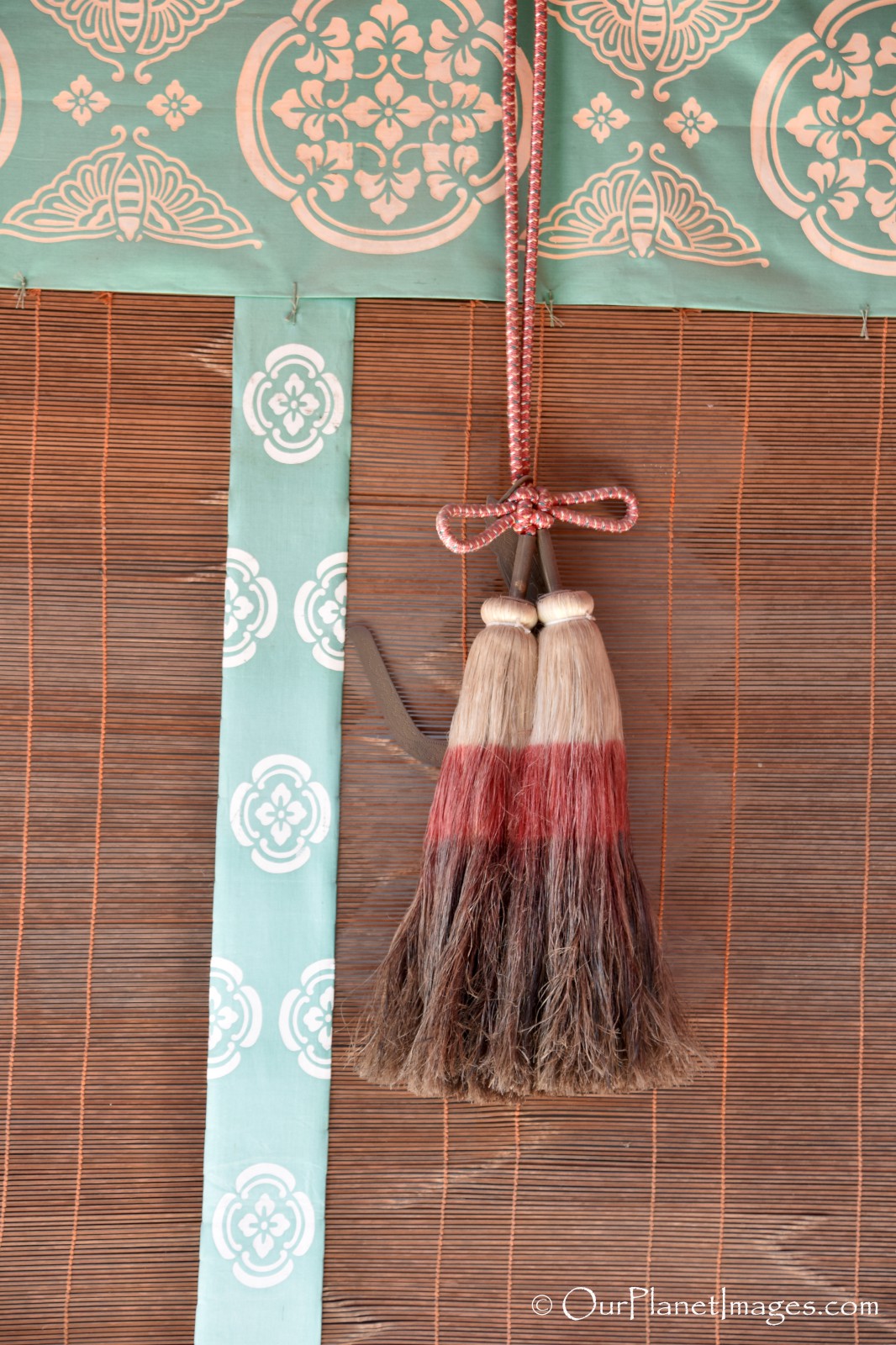
A section near the dark room was covered with hanging banners. I am not sure the meaning of this but is not something that I have seen before.
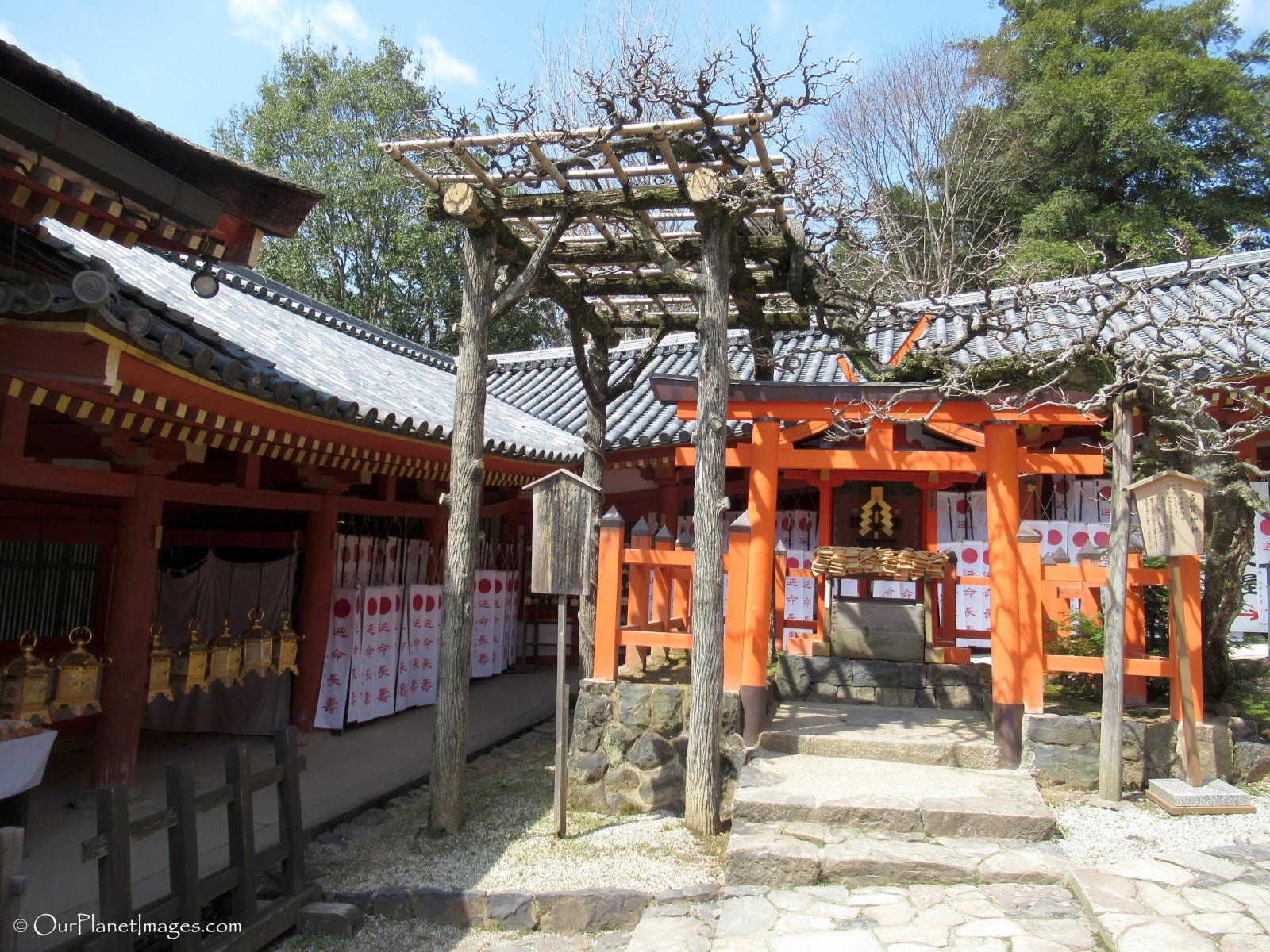


Small Details
When I visit temples in Asia I always look for the small details or strange things that catch my attention. My final three photos on this post fall in this category.
The first photo is of the edge of the roof. The roof is literally made from thousands of small piece of Hinoki Cypress bark. The bark is harvested from living Cypress tree. The harvesting process is sustainable and does no kill the trees. Another interesting note is that the bottom edge of the roof is much thicker than at the top of the roof, creating the traditionally curved shape of the roof.

The second photo is a large stack of barrels. I took the photo because it looked like it would make a nice photo but it took me some digging to find out why these barrels were in the shrine. These are sake barrels that are donated to Shinto Shrines by sake breweries. It is said that sake unites people and the gods. Sake is use in some ceremonies and empty barrels are used for decoration.
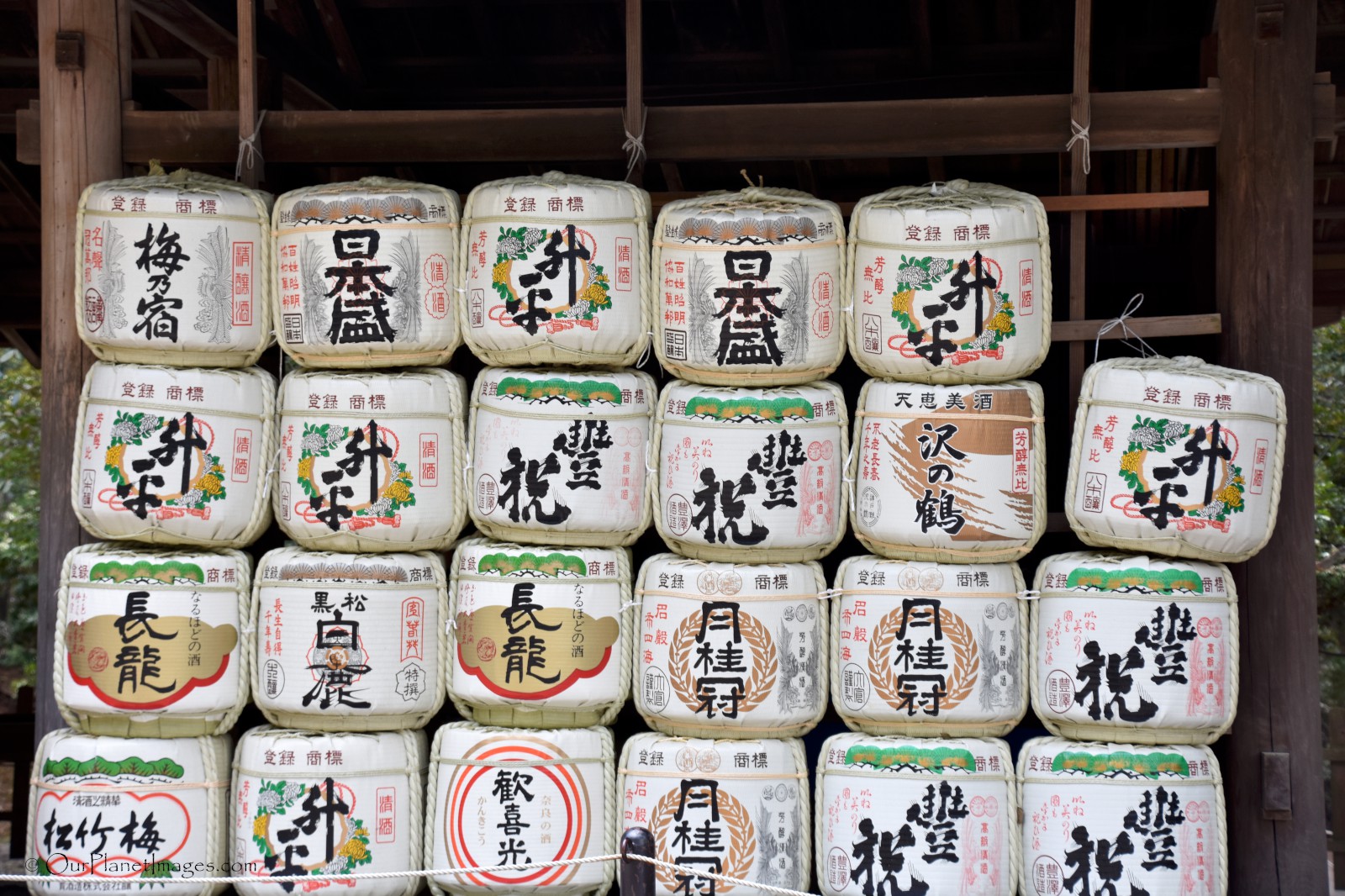
The final photo is simple. This photo just says “Japan”. When I say this image I thought this could have been an image from hundreds of years ago.
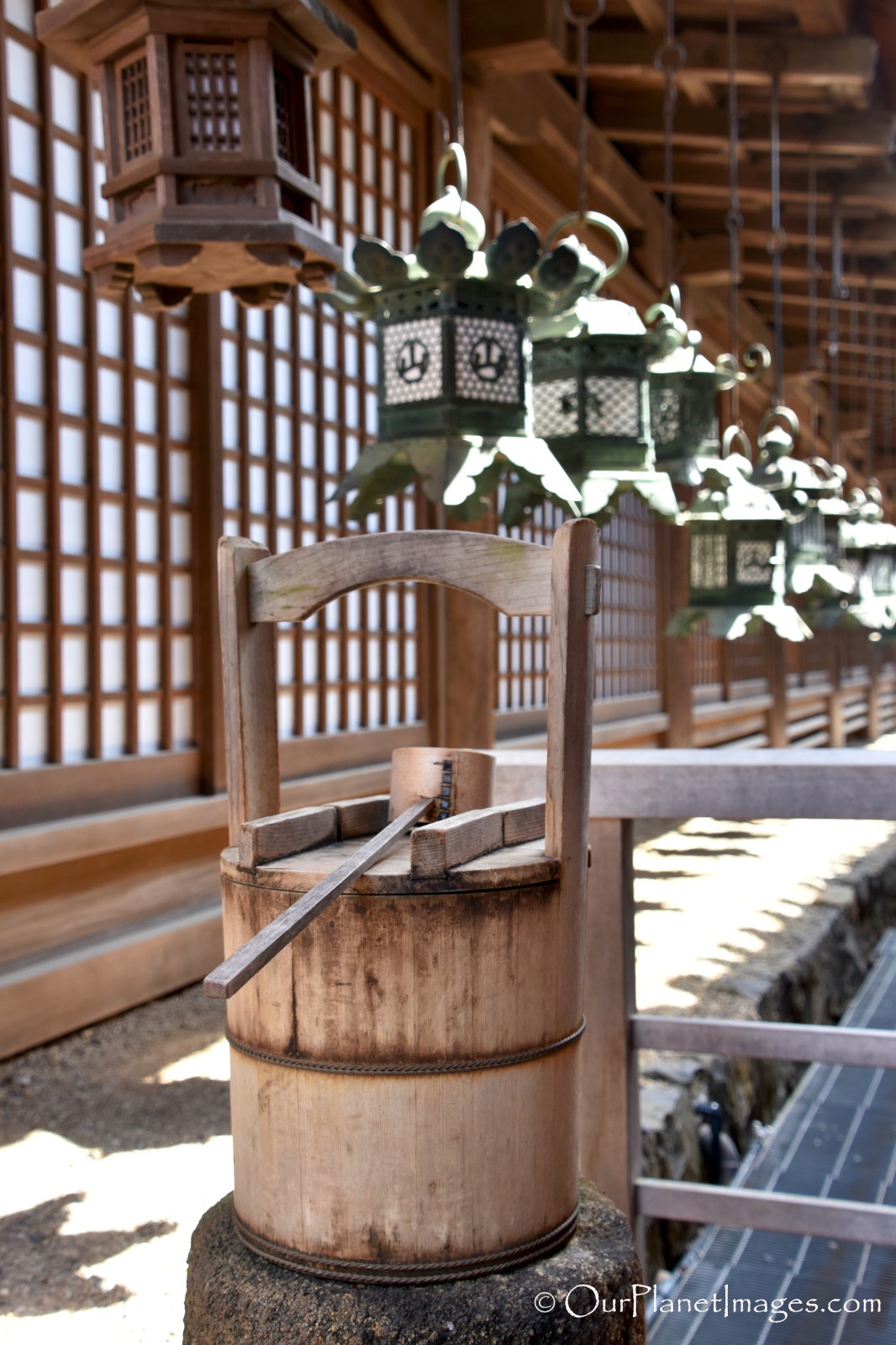
In December 1998, the “Historic Monuments of Ancient Nara” including Kasuga Taisha and Kasugayama Primeval Forest were designated as a joint UNESCO World Heritage Site.
The Dust on My Shoes
I enjoyed visiting the Kasuga Taisha Shrine. It’s hard to hard to say much without first mentioning the lanterns. I have been to a few shrines and temples in Japan and they seem to a predominate element. The Senso-Ji Temple has oversized lanterns and the Fushimi Inari-taisha Shrine has torii gates. This shrine’s defining element are the many lanterns
I thought the contrast between the moss covered stone lanterns and the intricate designed bronze lanterns were interesting. The stone lanterns along the entry pathway gave me the feeling of something that had endured through the ages.
Going into the dark room filled with lit lanterns gave me a sense of seeing the lanterns lit a night but I am sure that seeing 3,000 lanterns flickering at night must be an amazing sight.
